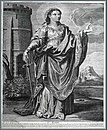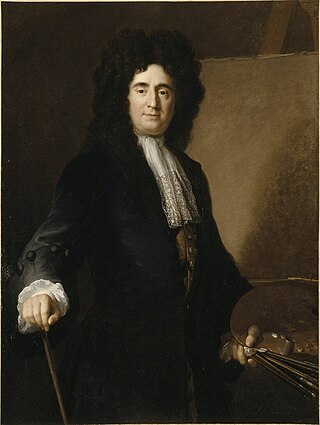
François de Troy was a French painter and engraver who became principal painter to King James II in exile at Saint-Germain-en-Laye and Director of the Académie Royale de peinture et de sculpture.
Jan Karel Donatus van Beecq was a Dutch marine painter, active in England and later in France, where he became a member of the Academy in 1681.

Benoît Audran the Elder was a French engraver.
Germain Audran (1631–1710) was a French engraver.

Jean Charles Baquoy (1721–1777) was a French engraver.
Bernard Baron was a French engraver and etcher who spent much of his life in England.

Étienne Baudet, an eminent French engraver, was born at Vineuil, in the department of Loir-et-Cher, about 1636. He was a pupil of Sébastien Bourdon and Cornelis Bloemaert, and afterwards went to Rome, and appears to have adopted the manner of Cornelis Bloemaert in his earliest plates, which are executed entirely with the graver. He afterwards on his return to Paris altered his manner, and calling in the assistance of the point, he executed his best prints, which bear a strong resemblance to the manner of Jean Baptiste Poilly. He made an excellent choice in the subjects of his plates, which are from the works of some of the most distinguished masters of Italy and France. He was a member of the Royal Academy of Paris, in which city he died in 1711.
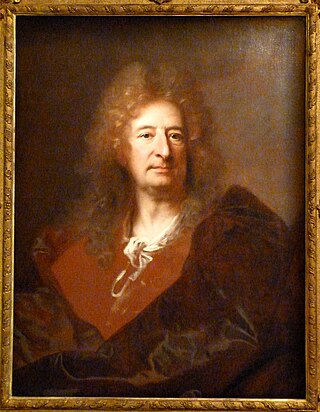
Gabriel Blanchard, known as Blanchard Le Neveu, the only son of Jacques Blanchard, was born in Paris in 1630, and studied under his uncle, Jean Baptiste Blanchard. He was, in 1668, elected Academician on the merits of an allegorical painting of the 'Birth of Louis XIV,' now at Versailles; but his most successful work was a picture of 'St. Andrew,' which he painted for the Goldsmiths' Guild. He became keeper of the royal collection, and successively assistant professor, professor, and, in 1699, treasurer of the Academy. He died in 1704. Two of his sons, Nicolas and Philippe Thomas, were likewise painters.

Frederik Bloemaert was a Dutch printmaker and draftsman.

Jean-Baptiste Boyer, Marquis d'Éguilles (1650–1709) was a French aristocrat, lawyer and engraver.

P. Jean-Baptiste Bradel, a French draughtsman and engraver, was born in Paris about 1750. He was chiefly employed in engraving portraits, which are neatly executed, and which include the following plates:
John Baptist Chatelain (1710–1758) was an English draughtsman and engraver of French background, specialized in landscapes.
Nicolas Cochin (1610–1686), called the Elder, was a French draughtsman and engraver. He was born at Troyes in 1610, the son of a painter named Noel Cochin. About 1635, he went to Paris, where he died in 1686. He often imitated and copied Jacques Callot, but chose for his model Stefano della Bella, some of whose drawings he engraved. Like these two artists he excelled in small figures, which he grouped and delineated with lifelike animation. His specialty was topography, including battles, sieges, and encampments. He engraved several hundred subjects, the most important of which are those he executed for the "Glorieuses Conquêtes de Louis le Grand", called the "Grand Beaulieu", published between 1676 and 1694. The best of these plates may be the "Siege of Arras", engraved on 16 plates by Cochin and Jean Frosne.

Jean-Baptiste Coclers was a Southern Netherlandish portrait painter and a painter of floral still lifes and historical subjects.
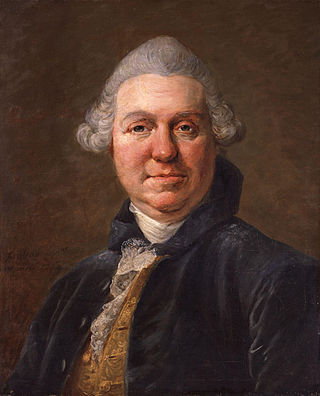
Jean-François Gilles Colson, the son of Jean-Baptiste Gilles, was born in Dijon in 1733. He was a pupil of his father, of Frère Imbert at Avignon, and of Nonotte at Lyons. On coming to Paris he was presented to the Duke of Bouillon, who kept him in constant employment for forty years as architect, sculptor, painter, and even gardener. He gained a high reputation as a portrait painter, and left several manuscripts on perspective, poetry, and the fine arts. He died in Paris in 1803.

Henri-Alfred Darjou, a French painter and draughtsman, born in Paris in 1832, was the son of Victor Darjou, a portrait painter of some ability. He studied under his father and under Léon Cogniet, and exhibited first at the Salon of 1853, from which time onwards he almost every year sent pictures which were for the most part of genre subjects. The paintings of Darjou have, however, done less for his reputation than the numerous designs which he made for the 'Illustration' and the 'Monde illustré.' He was also the designer of the front cover of the 1867-book 'Les Reves et les Moyens de les Diriger: Observations Pratiques' by Marquis d'Hervey de Saint-Denys. He died in Paris in 1874.

Jean Daullé was a French engraver.

Antoine Dieu was a French painter born in Paris. He was a son of Edouard Dieu, an engraver, who died in Paris in 1703. He was instructed by Lebrun, and painted historical subjects and portraits in the style of his master. The Duke of Burgundy before the King and the Marriage of the Duke of Burgundy are in the Museum at Versailles, but his best work is the portrait of Louis XIV. on his Throne, which was engraved by Nicolas Arnoult. Dieu was received at the Academy in 1722, and died in Paris in 1727. His brothers, Jean Dieu and Jean Baptiste Dieu, were engravers; the former was born about 1658, and died in Paris in 1714.

Jean-Baptiste Henri Durand-Brager (1814–1879) was a French painter, noted for his marine scenes and Orientalist works.
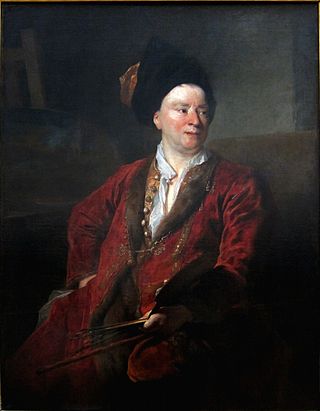
Jean-Baptiste Forest was a French landscape painter.

